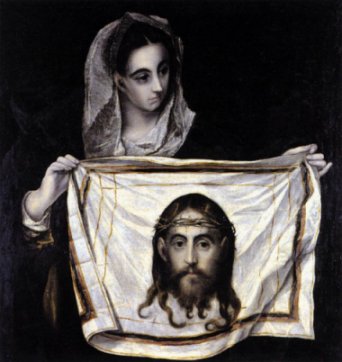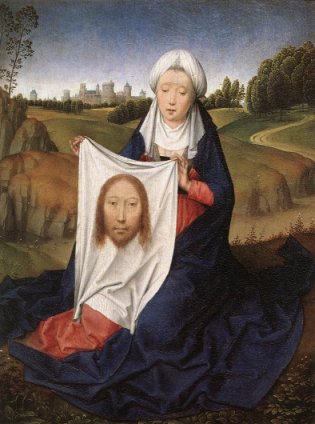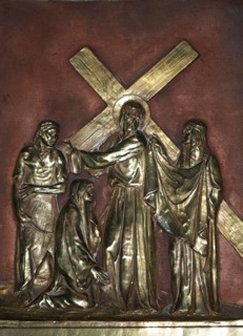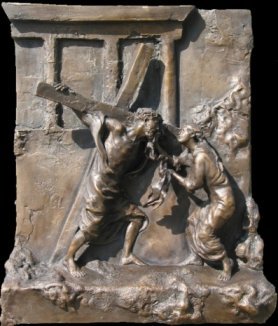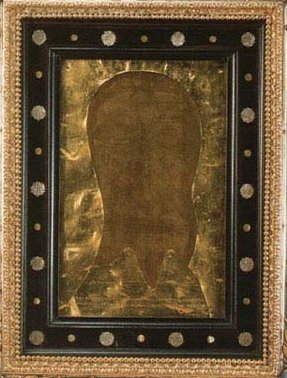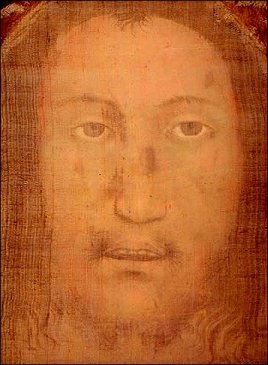|
The Passion of Christ |
|||
|
The Veil of Saint Veronica |
|||
|
It
seemed like such a simple legend, one that would provide a little
time-out from the complex theology of some of the other Passion events.
A pious woman on the road to Calvary mopped the face of Christ; an
imprint of the image of that face magically appeared on the cloth,
usually described as a veil. The
story, although non biblical, became the sixth image of the Stations of
the Cross. Simple? Well, the art itself raises few problems. Here are a few images. |
|||
|
|
|
|
|
| The key element here is the face of Christ itself, presented as a devotional image, and this is difficult to present in a narrative version showing the incident on the road to Calvary. Such images are generally reserved for the Stations of the Cross, as below. | |||
|
|
|
||
|
Who was Veronica? Some legends link Veronica with the woman 'diseased with an issue of blood' described in Mk 5:21-43, Luke 8:43-48, and Matthew 9:20-22. The Golden Legend tells a complicated tale. In short, after the imprinting of Christ's face on the veil, Veronica is taken to Rome, where the Emperor Tiberius was suffering from a 'grievous malady'. He worshiped the 'kerchief' and was instantly cured. There follows an involved tale about the summoning of Pilate to Rome. Tiberius intended to deal with him, but he was rendered invincible because he wore Christ's seamless garment. We'll leave the story at that point; strangely, Tiberius doesn't do a Constantine, and for some reason remains a pagan. It has been pointed out, by the probably rightly sceptical, that the name Veronica is most likely derived from the Latin Vera Icon, or true image. The supposed icon came first, and the name was attached later - the incident does not appear in early medieval art. Once again the cold light of reason spoils a good story. |
|||
|
What about that veil? All that is lacking here is a jobbing novelist to turn out the definitive mystery pot-boiler about Veronica's veil. I'm sure someone will one day. Medieval legend tells that Veronica remained in Rome after curing Tiberius, and, on her death, bequeathed the veil, sometimes called rather unattractively a sudarium, (sweat towel) to Pope Clement. The relic remained in St Peter's and, it is claimed, it is still there today. However, there is no record of any such relic before circa 1200. After then it became one of the most precious relics in Christianity, credited with miraculous powers. The Vatican is somewhat coy about discussing this relic, particularly as Veronica is no longer in the Roman Martryology and the story no longer features in the latest version of the Stations of the Cross. Nevertheless it would seem that it is still there, and a search on the internet throws up one or two fuzzy photographs which claim authenticity. However, some years ago, it was claimed that the 'real' veil had been found in a monastery in Manoppello and this caused excitement of Turin Shroud proportions. The image, it seems, has faded away on the St Peter's image, but it is claimed that copies were made of it and some of these remain; one of these, now in Vienna, is shown below. |
|||
|
|
|
||
